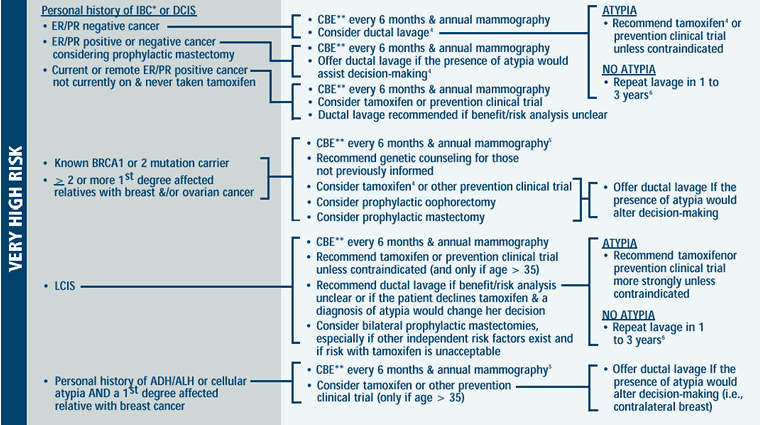
|
|
|||
| What is the optimal approach to breast cancer risk assessment? | |||
 |
|
||||||||||
|
As more options become available for women at high breast cancer risk, the quantitative determination of risk has become increasingly important. In addition, there are a number of methods available to assess a patient’s risk. The Risk Assessment Working Group* — comprised of research leaders from a variety of disciplines — was formed to address these issues and create a management strategy to assist clinicians in sorting through these issues. As an initial project, in December 2001, nearly 600 breast surgeons responded to a survey examining how women at high risk for developing breast cancer are identified and managed. The results are considered a baseline to look at education strategies to optimize the use of risk assessment. RATIONALE FOR RISK ASSESSMENT In the past there was very little reason for clinicians to spend a lot of time understanding breast cancer risk, but in recent years things have changed. First, the clinical availability of tamoxifen on the market as a drug which has been shown to reduce breast cancer incidence in high-risk women mandates a better understanding of who should consider taking that drug and who should not. In addition, the public is more aware of the idea of breast cancer risk, and women frequently seek counseling from their physicians about their level of risk. Although prophylactic mastectomy has been around as a breast cancer risk reduction strategy for a long time, in an era of breast conserving therapy for most established invasive cancer, its role may be changing. It may be limited to the very highest risk women, such as those with genetic mutations that carry a very high level of risk. All this mandates that clinicians understand and be conversant with the concept of risk. —Monica Morrow, MD ROLE OF THE GAIL MODEL IN RISK ASSESSMENT The main risk assessment tool currently available is the Gail Model. Based on a woman’s history, it provides us a mathematical estimate of that woman’s breast cancer risk. Obviously, the higher her risk, the more motivated one would be to initiate risk reduction strategies, such as chemoprevention. Conversely, if the patient has an average to low risk, she can be reassured, and that’s an important role for the physician as well. We now have some assessment tools to separate low- to average-risk women from those who may need aggressive interventions and treatments. —Joyce O’Shaughnessy, MD WOMEN’S OVERESTIMATION OF THEIR RISK What we know from our studies and studies of others is that women overestimate their risk. They have a heightened anxiety about their risk. Anytime we can give them a more realistic, objective understanding of their risk, we help them — even if they’re high-risk — because the greatest anxiety comes from not knowing. Risk assessment accomplishes two objectives. First of all, most patients are low- or average-risk and it provides us the opportunity to educate them about routine screening and reassure them. Secondly, we can identify the high-risk women and offer them risk reduction strategies, such as tamoxifen. Victor Vogel, MD
|

 |
||||||||||||||||
|
||||||||||||||||
|
|
|
Costantino JP et al. Validation studies for models projecting the risk of invasive and total breast cancer incidence. J Natl Cancer Inst 1999;91(18):1541-8. Abstract Daly MB, Ross EA. Predicting breast cancer: The search for a model. J Natl Cancer Inst 2000;92(15):1196-7. Abstract. Euhus DM. Understanding mathematical models for breast cancer risk assessment and counseling. Breast J 2001;7(4):224-32. Abstract Fabian CJ, Kimler BF. Breast cancer risk prediction: Should nipple aspiration fluid cytology be incorporated into clinical practice? J Natl Cancer Inst 2001;93(23):1762-3. Abstract. Gail MH, Costantino JP. Validating and improving models for projecting the absolute risk of breast cancer. J Natl Cancer Inst 2001;93(5):334-5.Abstract. Rockhill B et al. Validation of the Gail et al. model of breast cancer risk prediction and implications for chemoprevention. J Natl Cancer Inst 2001;93(5):358-66. Abstract
|